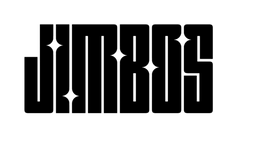The Beginner’s Guide to Paint Correction – Everything You Need to Know
If you’ve got swirl marks, dull paint, or just want your car to shine again—this is your complete beginner’s guide to safe and simple paint correction.
The Simplest Way to Start Paint Correction
Use Picture Perfect Polish with a Cut & Finish Pad to correct paint in one easy step—even if it's your first time.
Step 1: Understand What Paint Correction Is
Paint correction is the process of safely removing defects—like swirl marks, oxidation, and fine scratches—from your vehicle’s clear coat using a polish and machine. The goal is to restore clarity, gloss, and depth.
Read: What Is Paint Correction? A Beginner-Friendly Guide
Step 2: Choose One-Step or Two-Step
Most beginners only need a one-step polish to get great results. Two-step correction is more advanced and usually reserved for deep scratches or show-car finishes.
Read: One-Step Polish vs Two-Step Correction – Which Do You Need?
Step 3: Pick the Right Pads
The pad controls how much correction you get from your polish. For most jobs, you only need two:
- Cut & Finish Pad for general correction
- Finishing Pad for soft paint and final passes
Read: Best Buffing Pads for Paint Correction (Beginner-Friendly)
Step 4: Machine or Hand?
A DA polisher gives better, safer results—but you can still make small improvements by hand. Just don’t expect swirl removal without a machine.
Read: Do You Need a DA Polisher to Correct Paint?
Step 5: Follow the Right Process
- Wash and clay the paint
- Apply 3–4 pea-sized drops of polish to your pad
- Work in small 2x2 foot sections
- Use moderate pressure with overlapping passes
- Wipe off residue with a clean microfiber towel
Read: How to Remove Swirl Marks Without Damaging Your Paint
Step 6: Avoid These Common Mistakes
Most polishing damage happens because people use too much pressure, the wrong pad, or polish dirty paint.
Read: 5 Mistakes Beginners Make When Polishing Paint
Final Thoughts
You don’t need expensive tools or advanced skills to improve your paint. With the right polish, a quality pad, and a little patience, even first-time users can get pro-level results.
Want to try it yourself? Grab the Picture Perfect Paint Bundle and follow the video above step-by-step.
Cluster Posts Recap
- What Is Paint Correction?
- How to Remove Swirls Without Damaging Paint
- One-Step vs Two-Step Correction
- Best Buffing Pads for Paint Correction
- Do You Need a DA Polisher?
- 5 Polishing Mistakes to Avoid



